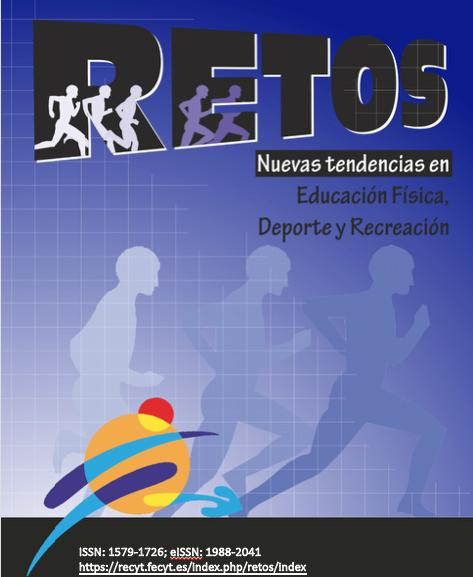Training of physical education teachers for the prevention of prevention of gender violence in educational institutions in El Milagro, Ecuador
DOI:
https://doi.org/10.47197/retos.v68.115038Keywords:
gender, physical education, prevention, teacher training, violenceAbstract
Introduction: The training of physical education teachers plays a crucial role in the prevention of gender-based violence in school settings. A lack of training in this area can perpetuate stereotypes and foster inequalities within both educational and sports environments.
Objective: The objective of this study was to analyze the relationship between gender training among physical education teachers and the implementation of preventive strategies against gender-based violence in educational institutions in Milagro, Ecuador.
Methodology: A quantitative approach with a correlational-explanatory design was used. The sample consisted of 152 physical education teachers selected through stratified probability sampling. A structured questionnaire validated by experts was applied, and statistical analysis was performed using Pearson correlation.
Results: The results showed a significant correlation between teachers' gender training and the implementation of gender-based violence prevention strategies in both classrooms and sports activities. Teachers with greater gender training were found to promote more inclusive and equitable practices.
Discussion: When compared with previous studies, the findings confirmed that gender training for teachers directly influences the reduction of discriminatory attitudes and behaviors, reinforcing the importance of incorporating gender perspectives into teacher training programs.
Conclusion: It was concluded that strengthening gender training for physical education teachers is a key strategy for preventing gender-based violence in schools and for promoting a more equitable and inclusive educational environment.
References
American Educational Research Association (AERA). (2021). Ethical Standards for Research in Educa-tion. Washington, DC.
Banco Mundial. (2021). Ending Gender-Based Violence in Schools: Strategies for Education Systems. Recuperado de: https://documents1.worldbank.org/curated/en/470341626799342515/pdf/Ending-Violence-in-Schools-An-Investment-Case.pdf
Bisquerra, R. (2021). Metodología de la investigación educativa. Editorial Síntesis.
Casado, C., Mayorga, D., Guijarro, S., y Viciana, J. (2020). ¿Es efectivo el Modelo de Educación Deportiva para mejorar la deportividad y actividad física en escolares? RICYDE. Revista Internacional de Ciencias del Deporte, 16, 180-198. https://doi.org/10.5232/ricyde2020.06005
Castillo, F., Escobar, M., Jiménez, B., Becerra, I., Cañete, J., & Cordero, F. (2025). Profesores de Educación Física y violencia escolar: una mirada desde las aulas. Retos, 66, 226–239. https://doi.org/10.47197/retos.v66.108781
Cepal. (2021). Las violencias en el espacio escolar. Recuperado de: https://repositorio.cepal.org/server/api/core/bitstreams/a4a9a2cc-c1a3-4931-a729-e0106c42e85a/content
Field, A. (2022). Discovering Statistics Using SPSS. Sage Publications.
George, D., & Mallery, P. (2020). IBM SPSS Statistics 27 Step by Step: A Simple Guide and Reference. Routledge.
González, M., López, J., Reynaga, P., Morales, J., Díaz, A., y Gómez, L. (2024). Actualidades en educación física y deporte 2023. Universidad de Guadalajara. Recuperado de: https://www.researchgate.net/profile/Martin-Francisco-Villalo-bos/publication/379946054_Actualidades_Educacion_Fisica_y_Deporte_2023/links/66228ac766ba7e2359e92452/Actualidades-Educacion-Fisica-y-Deporte-2023.pdf
Hernández, R., Fernández, C., & Baptista, P. (2022). Metodología de la investigación. McGraw-Hill.
INEC. (2022). Estadísticas educativas en Ecuador. Recuperado de: https://quitocomovamos.org/wp-content/uploads/2024/02/05Factsheet_Educacion.pdf
López, I., & Micaela, Z. (2020). La educación como factor de protección contra la violencia de género en Ecuador. Valor agregado, (14), 9-40. Recuperado de: https://www.researchgate.net/publication/353996422_La_educacion_como_factor_de_proteccion_contra_la_violencia_de_genero_en_Ecuador
Loreto, M., Flores, E, Maureira, F., & Gamboa, R. (2024). Estereotipos de género en la práctica de ejerci-cio físico y deporte en estudiantes universitarios de la carrera de Pedagogía en Educación Física en Chile. Retos, 55, 1–10. https://doi.org/10.47197/retos.v52.101489
Ministerio de Educación del Ecuador. (2021). Plan Nacional de Educación para la Igualdad de Género. Quito, Ecuador.
OMS. (2021). Global Status Report on Violence Prevention. Ginebra, Suiza.
Ramírez, J., Alarcón, R., y Ortega, S. (2021). Violencia de género en Latinoamérica: Estrategias para su prevención y erradicación. Revista de Ciencias Sociales, 26(4), 260 – 275. https://www.redalyc.org/journal/280/28065077021/html/
Rawlings, V. (2024) I want to make a difference’: Students co-researching school cultures of gender and sexuality. Aust. Educ. Res. 51, 869–888. https://doi.org/10.1007/s13384-024-00701-8
Rodríguez, M., & Pérez, L. (2021). Educación en género y formación docente. Ediciones Pedagógicas.
UNESCO. (2021). School violence: why gender matters and how to measure school-related gender-based violence. Recuperado de: https://unesdoc.unesco.org/ark:/48223/pf0000385788
Vilabrille, U. (2024). Igualdad de género en la educación física y el deporte. [Tesis de pregrado, Univer-sidad de Valladolid] https://uvadoc.uva.es/bitstream/handle/10324/70056/TFG-L3963.pdf?sequence=1&isAllowed=y
Downloads
Published
Issue
Section
License
Copyright (c) 2025 Sandy Elisa Jativa Aguirre, Eva Lucía Vera Véliz, Letty Marleny Zambrano Villavicencio, Betsy Yisbelt Mieles León

This work is licensed under a Creative Commons Attribution-NonCommercial-NoDerivatives 4.0 International License.
Authors who publish with this journal agree to the following terms:
- Authors retain copyright and ensure the magazine the right to be the first publication of the work as licensed under a Creative Commons Attribution License that allows others to share the work with an acknowledgment of authorship of the work and the initial publication in this magazine.
- Authors can establish separate additional agreements for non-exclusive distribution of the version of the work published in the journal (eg, to an institutional repository or publish it in a book), with an acknowledgment of its initial publication in this journal.
- Is allowed and authors are encouraged to disseminate their work electronically (eg, in institutional repositories or on their own website) prior to and during the submission process, as it can lead to productive exchanges, as well as to a subpoena more Early and more of published work (See The Effect of Open Access) (in English).
This journal provides immediate open access to its content (BOAI, http://legacy.earlham.edu/~peters/fos/boaifaq.htm#openaccess) on the principle that making research freely available to the public supports a greater global exchange of knowledge. The authors may download the papers from the journal website, or will be provided with the PDF version of the article via e-mail.


